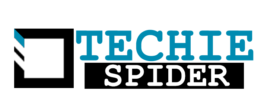When it comes to successful 3D printing, few settings are as critical as temperature. The interaction between the 3D printer and the 3D printer filament at specific temperature points determines everything from how well layers stick together to whether your print adheres to the build plate. Getting temperature settings wrong is a leading cause of frustrating failures, while dialing them in can unlock the full potential of your materials.
There are two primary temperatures you need to manage in FDM 3D printing: the nozzle temperature (also called extrusion temperature) and the bed temperature. Let’s delve into why each matters and the typical ranges for common 3D printer filament types.
Nozzle Temperature: Melting Your Material Just Right
The nozzle temperature is arguably the most important setting, as it controls the melting and flow of the 3D printer filament. The hotend on your 3D printer heats the filament to a semi-liquid state, allowing it to be extruded layer by layer.
- Too Low: If the nozzle temperature is too low for your 3D printer filament, the plastic won’t melt sufficiently. This leads to under-extrusion (thin or missing lines), poor layer adhesion (parts that easily break apart), and can even cause the nozzle to clog.
- Too High: Conversely, if the nozzle temperature is too high, the plastic can become too liquidy. This often results in excessive stringing or oozing (fine wisps of plastic between parts), blobs on the surface, and potentially weaker printed parts as the plastic degrades. For some filaments like ABS or Nylon, excessively high temperatures on a PTFE-lined hotend can also cause the PTFE to degrade and release harmful fumes.
Here are typical starting ranges for nozzle temperatures for common 3D printer filament types:
- PLA: 190°C – 220°C (Generally prints cooler)
- PETG: 230°C – 250°C (Higher temp needed for better layer adhesion)
- ABS: 230°C – 250°C (Similar to PETG, but relies more on bed temp and enclosure for success)
- TPU (Flexible): 210°C – 230°C (Lower speeds often needed too)
- Nylon: 240°C – 260°C+ (Requires an all-metal hotend)
- Carbon Fiber/Glass Fiber Filled: Varies based on base material (e.g., Carbon Fiber PLA), but may require slightly higher temps than the base material due to fillers affecting melt flow.
These are just starting points! The exact optimal temperature can vary based on the specific brand and color of 3D printer filament, as well as your 3D printer’s hotend and thermistor accuracy. Printing temperature towers (models designed to print at different temperatures along their height) is an excellent way to find the ideal nozzle temperature for a new spool of filament.
Bed Temperature: Anchoring Your Print to the Surface
The heated bed on your 3D printer serves a crucial purpose: ensuring the first layer of your print sticks firmly to the build surface and helping to prevent warping, especially with materials that shrink as they cool.
- Too Low: If the bed temperature is too low for the 3D printer filament being used, the first layer won’t adhere properly, leading to failed prints that detach mid-print or significant warping where the corners lift off the bed.
- Too High: While rare to set too high (unless exceeding the bed’s capability), excessively high bed temperatures can sometimes lead to “elephant’s foot,” where the base layers squish outwards. It can also make it difficult to remove the print once cooled.
Here are typical starting ranges for bed temperatures:
- PLA: 50°C – 65°C (Helps adhesion but often optional for small prints)
- PETG: 70°C – 80°C (More critical for adhesion than PLA)
- ABS: 90°C – 110°C (Essential for minimizing warping, often combined with an enclosure)
- TPU (Flexible): 30°C – 60°C (Helps adhesion, but too high can make prints sticky)
- Nylon: 80°C – 100°C+ (Important for adhesion and layer bonding)
- Carbon Fiber/Glass Fiber Filled: Varies based on base material, often similar bed temps to the base.
Again, these temperatures are starting points and can be influenced by your build surface material (glass, PEI, build tape, etc.), ambient room temperature, and whether your 3D printer has an enclosure.
Finding Your Sweet Spot
Achieving successful prints consistently with various 3D printer filament types relies heavily on finding the perfect balance of nozzle and bed temperatures for your specific 3D printer and material. Always start with the filament manufacturer’s recommended temperatures listed on the spool or packaging. Then, fine-tune these settings using calibration prints like temperature towers and bed adhesion tests.
Taking the time to understand and master temperature settings is perhaps the most impactful step you can take to improve your 3D printing results, ensuring that your 3D printer and 3D printer filament work in harmony.






